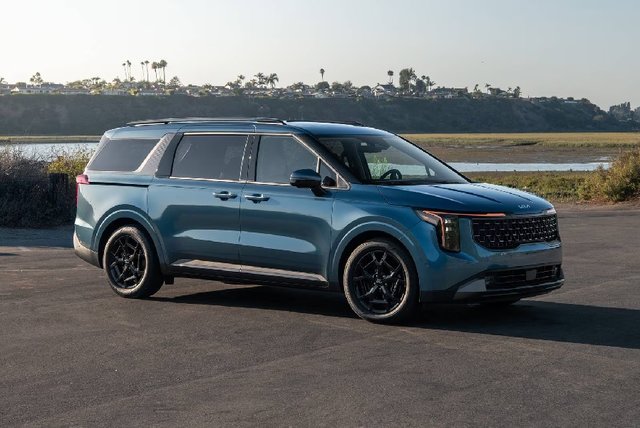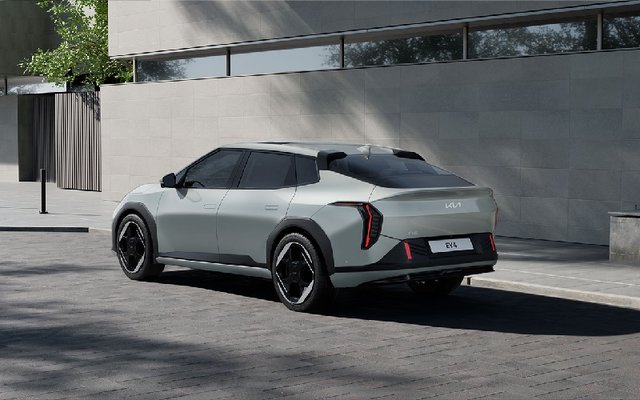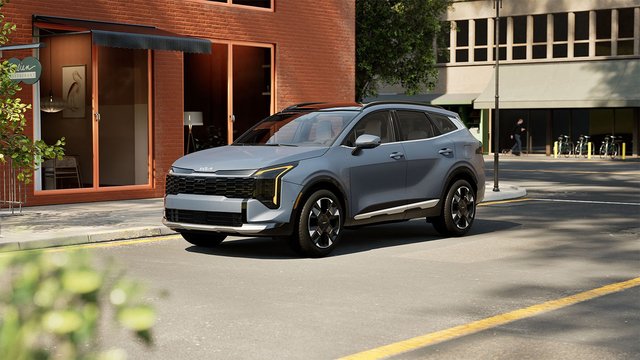The Kia EV9's infotainment system blends AI and machine learning for a smarter, personalized driving experience. Stay connected on the road
The automotive industry is undergoing a revolutionary transformation, with electric vehicles (EVs) at the forefront of this change. Among the latest entrants in the EV market, the Kia EV9 stands out not just for its impressive electric powertrain but also for its cutting-edge infotainment system. This system leverages the power of Artificial Intelligence (AI) and Machine Learning (ML) to provide an unparalleled user experience.
Understanding AI and ML in Automotive Context
Before we explore the specifics of the EV9's infotainment system, it's crucial to understand what AI and ML mean in the automotive context.
Artificial Intelligence in Vehicles
AI in vehicles refers to the ability of car systems to mimic human-like decision-making processes. This can range from simple tasks like adjusting the climate control based on occupant preferences to more complex operations like autonomous driving features.
Machine Learning in Vehicles
ML is a subset of AI that focuses on the ability of systems to learn and improve from experience without being explicitly programmed. In cars, ML algorithms can analyze vast amounts of data from various sensors and user interactions to continuously improve the vehicle's performance and user experience.
The Kia EV9's Infotainment System: An Overview
The Kia EV9 boasts a state-of-the-art infotainment system as the central hub for entertainment, navigation, vehicle controls, and connectivity. The system features a large, high-resolution touchscreen display complemented by a digital instrument cluster and an optional heads-up display.
Key Features of the EV9's Infotainment System
- Voice Recognition and Natural Language Processing
- Personalized User Profiles
- Intelligent Navigation
- Adaptive User Interface
- Predictive Maintenance Alerts
- Advanced Driver Assistance Integration
- Over-the-Air Updates
Voice Recognition and Natural Language Processing
One of the most noticeable applications of AI in the EV9's infotainment system is its advanced voice recognition capability.
How It Works
The system uses Natural Language Processing (NLP) algorithms to understand and interpret voice commands. Unlike traditional voice command systems that require specific phrases, the EV9's system can understand natural, conversational language.
AI and ML Contribution
- Continuous Learning: The ML algorithms continuously learn from user interactions, improving accuracy over time.
- Context Understanding: AI helps the system understand the context of commands, considering factors like location, time of day, and user preferences.
- Multilingual Support: ML models enable the system to understand and respond in multiple languages, adapting to the user's preferred language.
Real-World Application
For instance, a driver could say, "I'm feeling cold," and the AI would interpret this as a command to increase the cabin temperature. Over time, it might learn that this particular user prefers a specific temperature when they say they're cold.
Personalized User Profiles
The EV9's infotainment system uses AI to create and maintain personalized user profiles, offering a tailored experience for each driver and passenger.
How It Works
The system collects data on user preferences, habits, and frequently used features. It then uses this data to customize the infotainment experience for each user.
AI and ML Contribution
- Pattern Recognition: ML algorithms identify patterns in user behaviour to predict preferences.
- Adaptive Recommendations: AI provides personalized recommendations for music, podcasts, or points of interest based on user history and current context.
- Dynamic Profile Updates: The system continuously updates user profiles based on new interactions and changing preferences.
Real-World Application
If a user frequently listens to news podcasts during morning commutes, the system might automatically suggest the latest news episodes when the user starts their morning drive.
Intelligent Navigation
The EV9's navigation system goes beyond traditional GPS routing, incorporating AI and ML to provide smarter, more efficient navigation.
How It Works
The system uses real-time data from various sources to optimize routes, including traffic reports, weather conditions, and the vehicle's charge status.
AI and ML Contribution
- Predictive Routing: ML algorithms predict traffic patterns and suggest the most efficient routes.
- Charging Station Optimization: AI considers the vehicle's current charge, driving style, and available charging stations to plan optimal routes for long trips.
- Learning Driver Preferences: The system learns a driver's preferred routes and styles, adapting suggestions accordingly.
Real-World Application
For a weekend trip, the system might suggest a route that includes a stop at a fast-charging station, timing the stop to coincide with the driver's usual coffee break time, based on learned behaviour.
Adaptive User Interface
The EV9's infotainment system features an adaptive user interface that changes based on user behaviour and environmental conditions.
How It Works
The system monitors how users interact with the interface and accordingly adjusts the layout, button sizes, and feature prominence.
AI and ML Contribution
- Usage Pattern Analysis: ML algorithms analyze how different users interact with the interface to optimize layouts.
- Contextual Adaptation: AI adjusts the interface based on time of day, vehicle speed, and even weather conditions.
- Predictive Feature Surfacing: The system predicts which features a user will need and makes them more accessible.
Real-World Application
If a user frequently adjusts the climate control while driving, the system might make climate controls more prominent on the main screen during drives.
Predictive Maintenance Alerts
AI and ML are crucial in the EV9's ability to predict and alert users about potential maintenance needs.
How It Works
The system continuously monitors various vehicle components and systems, using AI to analyze this data and predict potential issues before they occur.
AI and ML Contribution
- Anomaly Detection: ML algorithms identify unusual patterns in vehicle performance data that might indicate upcoming issues.
- Predictive Analytics: AI uses historical data and current usage patterns to predict when maintenance might be needed.
- Personalized Maintenance Schedules: The system creates customized maintenance schedules based on individual driving habits and conditions.
Real-World Application
The system might detect a slight irregularity in battery performance and suggest a diagnostic check, potentially preventing a more serious issue down the line.
Advanced Driver Assistance Integration
The EV9's infotainment system is closely integrated with its Advanced Driver Assistance Systems (ADAS), with AI playing a key role in this integration.
How It Works
The infotainment system serves as an interface for many ADAS features, using AI to provide relevant information and alerts to the driver.
AI and ML Contribution
- Intelligent Alerts: AI determines the most appropriate times to provide driver alerts without causing distraction.
- Contextual Information Display: The system uses ML to decide what information is most relevant to display based on driving conditions.
- Adaptive Assistance: ADAS features adapt to individual driving styles, which are learned over time through ML algorithms.
Real-World Application
In heavy traffic, the system might automatically switch the display to show a more detailed view of surrounding vehicles, as detected by the car's sensors.
Over-the-Air Updates
AI and ML capabilities significantly enhance the EV9's ability to receive over-the-air (OTA) updates.
How It Works
The system can receive and install updates remotely, with AI managing the process to minimize disruption to the user.
AI and ML Contribution
- Intelligent Update Scheduling: AI determines the best times to download and install updates based on usage patterns.
- Personalized Feature Updates: ML algorithms identify which new features or improvements would be most beneficial to each user.
- Adaptive System Optimization: The system uses ML to continuously optimize its performance based on how it's used.
Real-World Application
The system might schedule a significant software update for the middle of the night when it learns the car is usually parked and connected to a home charger.
Privacy and Security Considerations
With the extensive use of AI and ML in the EV9's infotainment system, privacy and security are paramount concerns that Kia has addressed.
Data Protection
- Local Processing: Many AI functions are processed locally within the vehicle to minimize data transmission.
- Anonymization: When data is sent to the cloud for processing, it's anonymized to protect user privacy.
Cybersecurity Measures
- AI-Powered Threat Detection: The system uses AI to detect and prevent potential cybersecurity threats.
- Secure OTA Updates: All OTA updates are encrypted and verified to prevent tampering.
The Future of AI and ML in Automotive Infotainment
As we look to the future, the role of AI and ML in automotive infotainment systems like the one in the Kia EV9 is set to expand even further.
Potential Future Developments
- Emotion Recognition: Systems may use AI to recognize driver emotions and adjust the car's environment accordingly.
- Augmented Reality Displays: AI could power advanced AR displays, projecting navigation and safety information directly onto the windshield.
- Virtual Assistants: More advanced AI-powered virtual assistants could provide a wider range of services, from scheduling maintenance to making restaurant reservations.
- Inter-Vehicle Communication: AI could facilitate communication between vehicles, enhancing safety and traffic flow.
EV9’s Infotainment System: Truly Next-Generation
The Kia EV9's infotainment system represents a significant leap forward in how we interact with our vehicles. By leveraging the power of AI and ML, Kia has created a system that's not just smart, but adaptive, learning and evolving to meet the unique needs of each user.
From personalized user experiences and intelligent navigation to predictive maintenance and seamless integration with advanced driver assistance systems, AI and ML are at the heart of what makes the EV9's infotainment system truly next-generation.
As these technologies evolve, we can expect even more innovative features and capabilities in future iterations. The Kia EV9 is not just a showcase of current AI and ML capabilities in automotive infotainment; it's a glimpse into the future of human-vehicle interaction.
The integration of AI and ML in the EV9's infotainment system is a clear indication that the future of driving is not just electric but intelligent, adaptive, and personalized. As we move forward, these technologies will play an increasingly crucial role in enhancing safety, comfort, and the overall driving experience.
To learn more on Kia EV9 Infotainment visit Kia.ca






